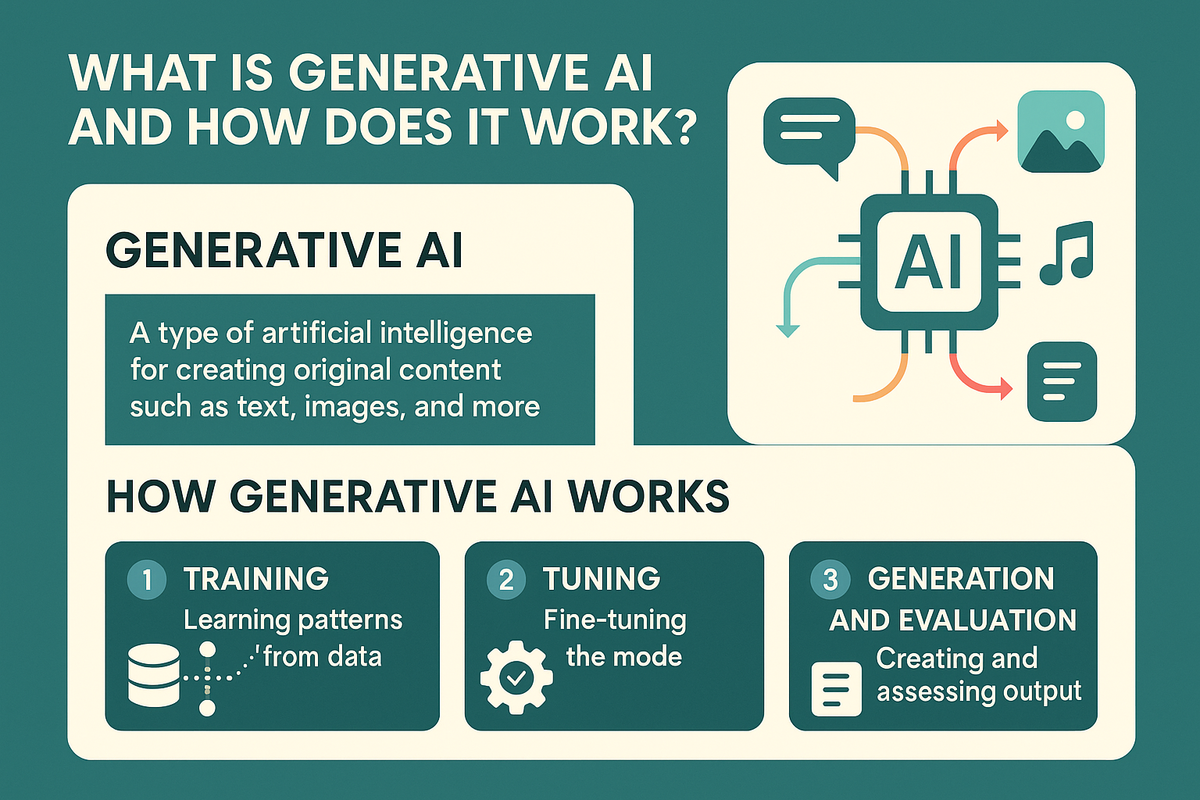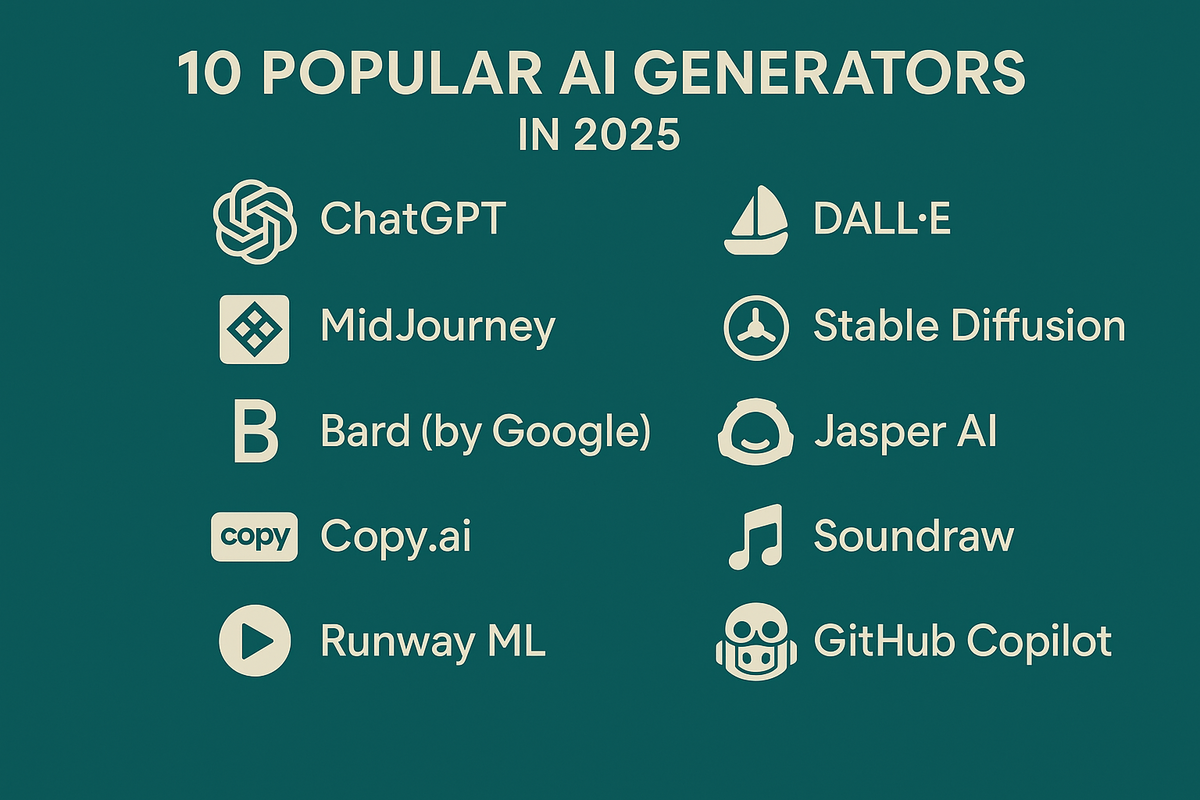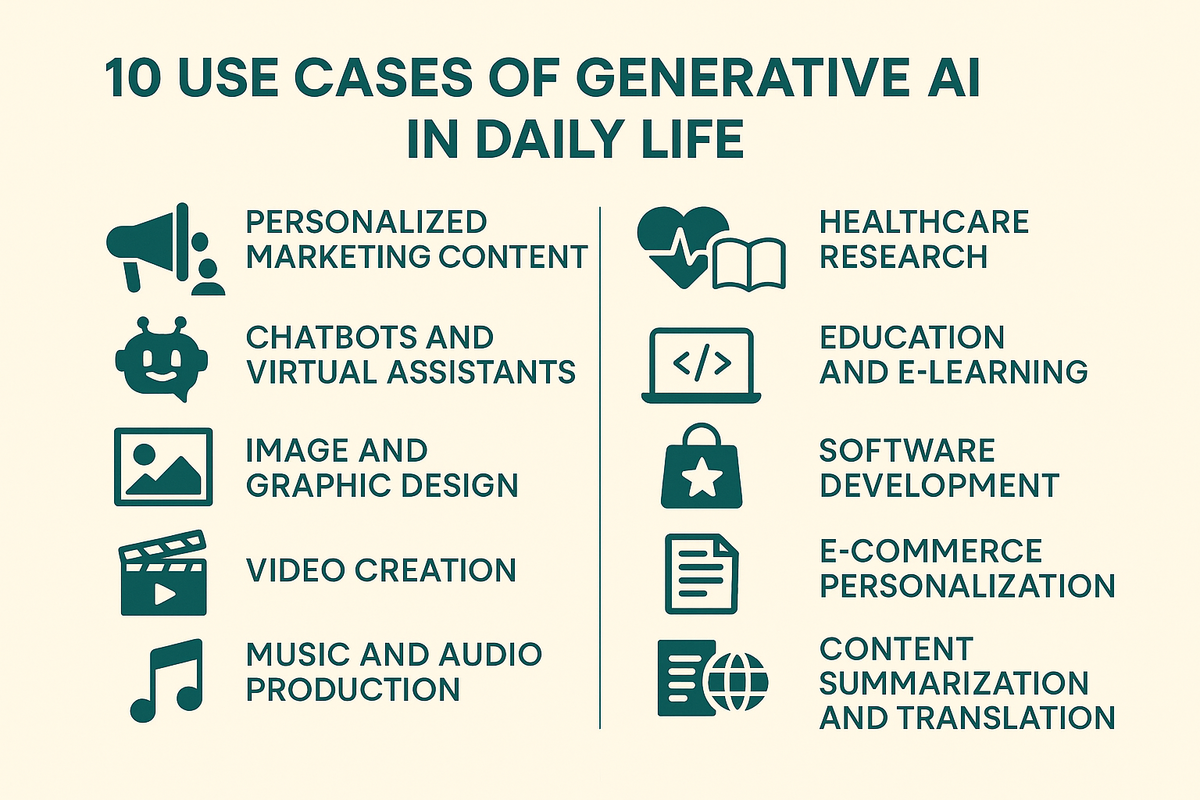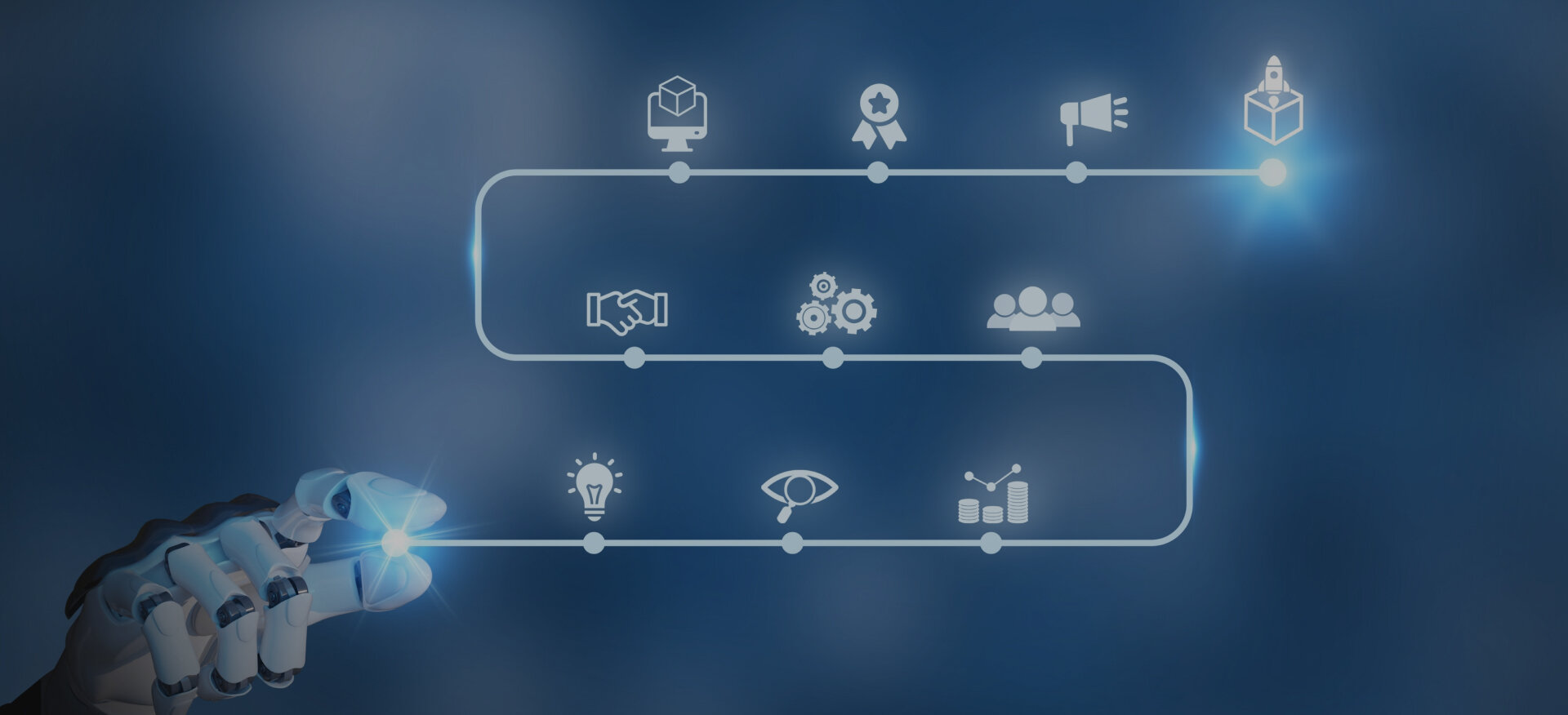What is Generative AI? At its core, it’s a groundbreaking branch of artificial intelligence that goes beyond analyzing data to actually creating new content whether it’s text, images, videos, music, or even software code. This technology is rapidly transforming how businesses operate, how creative industries innovate, and how people interact with digital tools in daily life. From generating personalized marketing campaigns to designing innovative product visuals, its applications are vast and impactful.
Recent projections show the generative AI market is set to reach $110 billion by 2030, growing at a CAGR of 34.3%, a clear indicator of its enormous global potential. For forward-thinking companies like Centric, generative AI is not just a trend but a game-changer. It enhances content creation, marketing strategies, and design workflows, empowering businesses to deliver personalized experiences at scale.
Whether it’s crafting compelling ad copy, creating dynamic web designs and development, or automating repetitive tasks, generative AI enables to drive innovation and deliver exceptional results in today’s competitive digital landscape.
What Does Generative AI Mean, And How Does It Work?
Generative AI is a cutting-edge branch of artificial intelligence focused on creating original content instead of simply analyzing or processing existing data.

Unlike traditional AI, which is designed to recognize patterns or make predictions, generative AI systems generate new outputs, including text, images, audio, video, and software code. This is made possible by advanced algorithms such as Generative Adversarial Networks (GANs) and transformer models, which allow AI to learn from large datasets, identify underlying patterns, and then produce fresh material that mimics human creativity.
In essence, generative artificial intelligence enables machines to "imagine" and create new things, similar to how a designer creates a logo or a writer drafts an article. This ability has made generative AI a powerful tool across industries, from marketing teams generating personalized ad campaigns to product developers designing prototypes quickly. By blending creativity with computational intelligence, generative AI technology is reshaping how businesses innovate and deliver unique experiences to their customers.
How Does Generative AI Work?
Generative AI typically works in three phases:
- Training: In this phase, generative AI systems are trained on vast datasets, often using unsupervised or semi-supervised learning approaches. This allows the AI to learn patterns and relationships without needing labeled data, forming the foundation for creating new content. How to train an AI model effectively during this phase is critical for ensuring the AI generates high-quality and relevant outputs.
- Tuning: Once the foundational model is created, it undergoes fine-tuning to tailor it to specific tasks or applications. This phase ensures that the generative model is customized to produce content that meets particular needs, such as writing in a certain style or generating images with specific details.
- Generation and Evaluation: In this phase, the AI generates new content based on user input. The output is evaluated for relevance and quality, and the model is continuously improved through feedback and generative AI development, ensuring that the content becomes more accurate and valuable over time.
Generative AI is transforming how businesses and individuals approach content creation, product design, and many other fields. By understanding and mimicking human creativity, it offers immense potential for enhancing productivity and innovation. While it opens up new opportunities, it also introduces challenges related to ethics, accuracy, and quality control, making it important to manage these developments thoughtfully.
Explore Our Web Design & Development Services!
What is the Difference Between AI and Generative AI?
Artificial Intelligence (AI) and Generative AI are terms often used interchangeably, but they represent distinct concepts within the realm of machine learning. Here’s how they differ:
| Aspect | Artificial Intelligence (AI) | Generative AI |
|---|---|---|
| Definition | Broad concept of creating machines that perform tasks requiring human intelligence. | A subset of AI that creates new, original content, rather than just analyzing or responding to data. |
| Focus | Primarily on decision-making, pattern recognition, and predictions based on existing data. | Focuses on producing new, creative outputs like text, images, music, code, or video. |
| Applications | Virtual assistants (e.g., Alexa, Siri), customer service chatbots, image recognition, self-driving cars, robotic cleaners. | Text generation (e.g., GPT), image creation (e.g., DALL-E), music composition, code generation. |
| Example Tasks | Sorting data, making predictions, facial recognition, recommendation systems, autonomous driving. | Creating ads, generating personalized content, designing logos, composing music, writing articles. |
| Human vs. AI | AI performs tasks that typically require human intelligence but lacks emotional intelligence and creativity. | Generative AI mimics human creativity, generating novel content that goes beyond simple analysis. |
| Technology Used | Machine learning, neural networks, data analysis, pattern recognition, decision-making algorithms. | Uses advanced models like Generative Adversarial Networks (GANs) and transformer models (e.g., GPT, DALL-E) for content creation. |
10 Popular AI Generators in 2025
Generative AI is already part of many tools and platforms we use daily.

Some popular examples include:
- ChatGPT – Generates human-like text for conversations, content creation, and problem-solving.
- DALL·E – Creates original images from text prompts.
- MidJourney – Produces highly detailed digital art and visuals.
- Stable Diffusion – An open-source model for generating realistic images.
- Bard (by Google) – A conversational AI for answering questions and generating content.
- Jasper AI – Focused on marketing content like blogs, ads, and emails.
- Copy.ai – Assists with copywriting and brainstorming content ideas.
- Runway ML – Used for AI-powered video editing and creative storytelling.
- Soundraw – Composes AI-generated music.
- GitHub Copilot – Helps developers by writing and suggesting code.
What Are The Benefits Of Generative AI?
Generative AI brings several advantages that make it a valuable tool for both businesses and individuals.
Here are some of the most impactful benefits:
1. Faster Content Creation
One of the biggest strengths of generative AI is speed. Tasks that used to take hours like writing blog posts, designing visuals, or editing videos can now be completed in minutes. This allows businesses to produce more content without sacrificing quality. This is why AI technology is revolutionizing content creation across industries.
2. Cost Savings & Efficiency
By automating repetitive or time-consuming tasks, generative AI reduces the need for large teams to handle routine work. Companies can allocate resources more effectively, cut down operational costs, and focus on higher-value strategies and creative decision-making.
3. Better Customer Engagement
Generative AI makes personalization possible at scale. From tailored product recommendations to custom ad campaigns, it helps businesses engage with customers in ways that feel more relevant and meaningful. This not only improves customer satisfaction but also builds stronger brand loyalty.
10 Use Cases Of Generative AI In Daily Life
Generative AI is transforming everyday life, offering innovative solutions across various domains.

Here are 10 exciting use cases of how generative AI can enhance our daily experiences.
- Personalized Marketing Content – Generating advertisement examples like ad copy, email campaigns, and social media posts tailored to specific audiences
- Chatbots and Virtual Assistants – Powering customer support with AI-driven, human-like conversations available 24/7.
- Image and Graphic Design – Creating logos, product visuals, and digital artwork quickly and at scale.
- Video Creation – Automating video editing or generating short promotional clips for businesses and social media.
- Music and Audio Production – Composing original background music, jingles, or sound effects for creative projects.
- Healthcare Research – Producing synthetic data to train medical models or designing molecules for new drug discovery.
- Education and E-Learning – Developing interactive learning materials, quizzes, and study guides tailored to individual learners.
- Software Development – Assisting programmers by generating code snippets, debugging, and optimizing software.
- E-commerce Personalization – Designing product recommendations and virtual try-on experiences for shoppers.
- Content Summarization and Translation – Turning long documents into concise summaries and translating text instantly across languages.
What Are The Real-World Applications Of Generative AI?
Generative AI is reshaping industries by streamlining tasks, enhancing creativity, and improving the way businesses connect with their audiences. Below are some of the most impactful applications in today’s digital world:
1. Content Creation and Copywriting
From blog posts and product descriptions to ad copy and email campaigns, generative AI helps businesses create high-quality content at scale. Best AI SEO software is essential for optimizing AI-generated content, ensuring it reaches a wide audience by improving search engine rankings and visibility. For those wondering what is CTA (call-to-action), it’s a prompt that encourages users to take a specific action, like “Shop Now” or “Sign Up Today.” Generative AI can craft compelling CTAs tailored to brand voice and audience preferences, ensuring faster production without compromising creativity or brand tone
2. Marketing and Branding
AI-powered tools can generate campaign ideas, visuals, and even slogans, allowing businesses to experiment with multiple creative directions quickly. For retailers, understanding what are five marketing strategies that retailers spend half of their annual budget on such as personalized advertising, influencer partnerships, content marketing, paid search, and social media campaigns can be enhanced by generative AI. By leveraging AI to optimize these high-budget strategies, brands can create more targeted and engaging campaigns that resonate with their audience, maximizing ROI
3. Customer Experience & Chatbots
Generative AI chatbots provide 24/7 support, resolve customer queries instantly, and guide users through personalized journeys. This not only enhances customer satisfaction but also frees up human teams to focus on complex issues.
4. Software Development Support
Developers are increasingly relying on generative AI for writing code snippets, debugging, and automating repetitive tasks. This accelerates software development cycles while reducing errors and improving efficiency.
3 Key Features Of Generative AI
Generative AI stands out from traditional AI because it doesn’t just analyze information, it creates something new. Below are the core features that make it such a powerful technology:
1. Creativity Beyond Automation
Unlike simple automation tools that repeat set tasks, generative AI can think outside the box. It produces fresh ideas, unique visuals, and innovative outputs, making it a valuable tool for design, marketing, and content creation.
2. Learning From Data
Generative AI improves over time by studying vast amounts of data and recognizing patterns. The more data it processes, the smarter and more accurate it becomes, which makes it ideal for personalization and predictive insights.
3. Producing Human-like Content
Generative AI can mimic human creativity, whether it’s writing natural-sounding text, generating artwork, or composing music. This ability to produce human-like content is what makes tools like ChatGPT and MidJourney so widely used:
What Are The Challenges And Limitations Of Generative AI?
Generative AI's transformative capabilities come with substantial challenges and limitations. Addressing these issues responsibly is critical for businesses like Centric, ensuring AI enhances productivity and creativity while upholding ethical and operational standards. One challenge often overlooked is the growing dependence on software development services to support the integration of generative AI in business workflows. The complexity of deploying AI at scale requires ongoing technical support and expertise, making it a significant barrier for small to medium-sized enterprises.
| Challenge / Limitation | Description | Severity |
|---|---|---|
| Bias in Outputs | AI-generated content may inherit biases from the training data, resulting in potentially unfair, discriminatory, or inaccurate outputs. This is especially critical in industries like marketing and recruitment. | ⚠️Medium |
| Quality Control | Not all AI outputs meet professional quality standards, requiring human oversight to edit, refine, and validate the generated content or designs. | ⚠️Medium |
| Ethical Concerns | Generative AI raises questions about authenticity, copyright infringement, and misinformation, especially when creating content like deepfakes or auto-generated text for sensitive topics. | ❗ High |
| Cost of Implementation | Training and deploying AI models require significant computational resources, expensive hardware, and specialized expertise, making it a costly solution for small businesses. | ⚠️Medium |
| Data Privacy Risks | Handling sensitive or proprietary data through generative AI tools can raise significant concerns about user privacy, data security, and potential misuse. | ❗ High |
| Limited Creativity | While AI generates content based on patterns, it cannot produce genuinely original, emotion-driven, or culturally nuanced content like humans. | ⚖️ Low |
| Dependency on Data Quality | Poor-quality training data leads to irrelevant or inaccurate outputs, which can hinder productivity and damage brand credibility if unchecked. | ⚠️Medium |
| Scalability Challenges | Deploying generative AI at scale requires advanced infrastructure, seamless integrations, and ongoing maintenance, which can strain business resources. | ⚠️Medium |
| Regulatory Compliance | Keeping up with evolving regulations around AI ethics, data protection, and intellectual property rights poses challenges for businesses leveraging AI. | ⚠️Medium |
| Energy Consumption | Training large AI models consumes significant energy, raising concerns about sustainability and environmental impact. | ⚠️Medium |
| Customer Trust Issues | Overuse of AI-generated content can sometimes appear inauthentic, eroding trust among customers who value genuine human interaction. | ⚠️Medium |
| Over-Reliance on AI | Businesses may become overly dependent on generative AI, leading to reduced human input and creativity, which could limit innovation and adaptability. | ⚠️Medium |
| Misuse of AI Capabilities | Generative AI can be misused to create harmful content, such as deepfakes or misleading information, presenting ethical and reputational risks. | ❗ High |
| Integration Complexity | Integrating generative AI tools with existing business workflows, CRMs, and other platforms can be time-consuming and technically demanding. | ⚠️Medium |
4 Best Practices for Generative AI Adoption
To successfully integrate generative AI into your organization, consider these best practices:
1. Start with Internal Applications
- Begin with internal processes to optimize productivity and gain hands-on experience.
- Customize AI models with internal knowledge before applying them externally.
2. Enhance Transparency
- Clearly inform users when they’re interacting with AI-generated content.
- Label AI outputs (e.g., AI search results) to help users make informed decisions.
3. Prioritize Security
- Implement guardrails to prevent unauthorized access to sensitive data.
- Mask or anonymize personally identifiable information (PII) during AI model training.
4. Test Extensively
- Develop automated and manual testing processes to validate AI outcomes.
- Use diverse beta testers to identify issues and continuously improve the model.
What Is The Future Of Generative AI?
Generative AI is still evolving, but its influence is set to expand even further in the coming years. Here are some ways it will shape industries and create new opportunities:
1. How It’s Shaping Marketing?
Marketing teams are increasingly relying on AI to create personalized campaigns, test multiple ad variations, and optimize marketing tactics like targeted social media ads and dynamic email campaigns for smarter, faster results. In the future, AI-driven creativity will make marketing faster, smarter, and more targeted than ever.
2. Role in Digital Transformation
Generative AI is becoming a core part of digital transformation, helping businesses reimagine processes, innovate customer experiences, and improve decision-making. Companies that adopt it early will gain a competitive advantage.
3. Opportunities for Growth
From healthcare and education to finance and entertainment, generative AI is opening up new possibilities across industries. Businesses that integrate AI strategically will unlock growth opportunities, reduce costs, and deliver more value to their customers.
Should Your Business Adopt Generative AI?
Adopting generative AI makes sense for companies that want to streamline operations, personalize customer experiences, and stay ahead in a competitive market. It’s particularly valuable for businesses dealing with large amounts of data, frequent customer interactions, or creative processes that require fresh ideas at scale.
For example, retail brands can use generative AI to personalize product recommendations, design dynamic ad campaigns, and improve customer engagement through AI-driven chatbots. In healthcare , AI can generate synthetic data for research, assist with medical imaging, and even design potential drug compounds. Meanwhile, the finance sector benefits from generative AI by automating report writing, detecting fraud patterns, and creating tailored financial insights for clients.
FAQs: What is Generative AI?
What is Generative AI in Simple Terms?
Generative AI is a type of AI that creates new content, such as text, images, or music, based on patterns it learns from existing data. It can produce things that didn't exist before.
What are Generative AI Examples?
- Text: GPT generates articles, emails, and stories.
- Images: DALL-E creates images from text prompts.
- Music: AI like MuseNet composes original music.
- Code: GitHub Copilot helps write and autocomplete code.
- Video: AI tools like Synthesia create animations or videos from text.
What is the Difference Between Generative AI and Other AI?
- Generative AI creates new content (e.g., text, images).
- Other AI analyzes data or makes decisions (e.g., facial recognition, self-driving cars), but doesn’t create new things.
Is ChatGPT a Generative AI?
Yes, ChatGPT is a type of generative AI. It uses advanced language models to generate human-like text based on prompts. This allows it to assist with tasks like answering questions, writing articles, and creating conversations.
What is the Difference Between AI and Generative AI?
Traditional AI focuses on analyzing data, detecting patterns, and making predictions (for example, fraud detection or recommendation systems). Generative AI, on the other hand, creates new content such as text, images, music, or code based on the data it has been trained on.
Is Microsoft Copilot Generative AI?
Yes, Microsoft Copilot is powered by generative AI. It assists users in writing code, creating documents, and enhancing productivity by generating suggestions and automating repetitive tasks.
What Are Foundation Models in Generative AI?
Foundation models are large-scale AI models trained on massive datasets that serve as the backbone for generative AI applications. Examples include GPT (for text) and Stable Diffusion (for images). These models can be fine-tuned for specific tasks across industries.
Where is Generative AI Headed?
Generative AI is moving toward deeper integration in business operations, marketing, healthcare, finance, and education. Future advancements will make it more accurate, ethical, and accessible, enabling organizations to create personalized experiences at scale.
When Was Generative AI Created?
The foundations of generative AI began decades ago with early AI research, but a major breakthrough came in 2014 with the introduction of Generative Adversarial Networks (GANs). The technology accelerated in the 2020s with the rise of transformer-based models like GPT.
Conclusion
In today’s fast-changing digital world, what is generative AI is no longer just a question of curiosity it’s a crucial factor shaping how industries innovate and grow. Generative AI is not just hype; it’s already transforming marketing, healthcare, finance, retail, and more by enabling faster content creation, smarter personalization, and innovative problem-solving. Businesses that embrace this technology can unlock new opportunities, improve efficiency, and strengthen their competitive edge.
For organizations ready to take the next step, working with experts ensures AI adoption is both effective and ethical. Companies like Centric help businesses harness the power of generative AI to drive innovation and create meaningful customer experiences.









